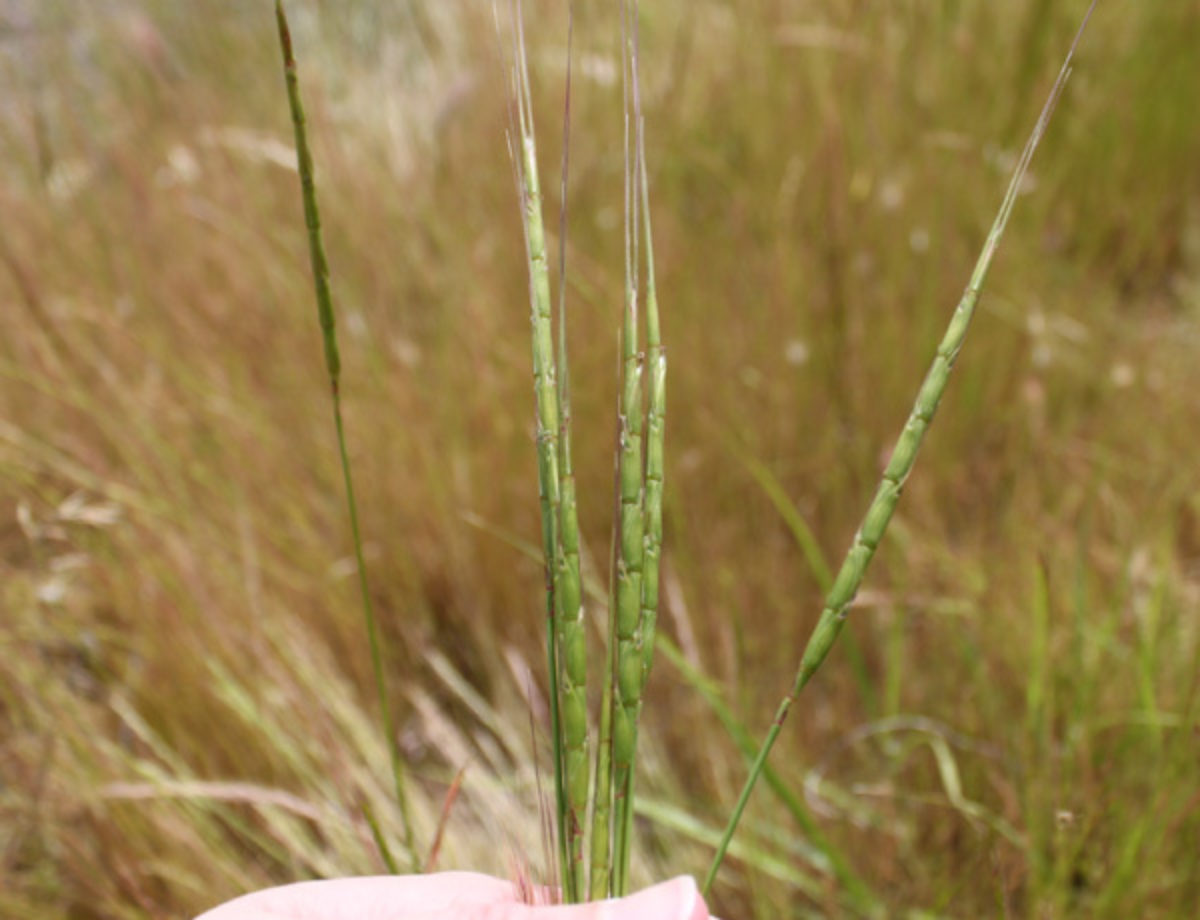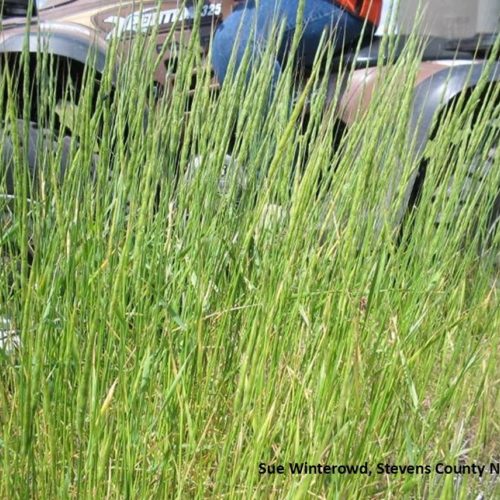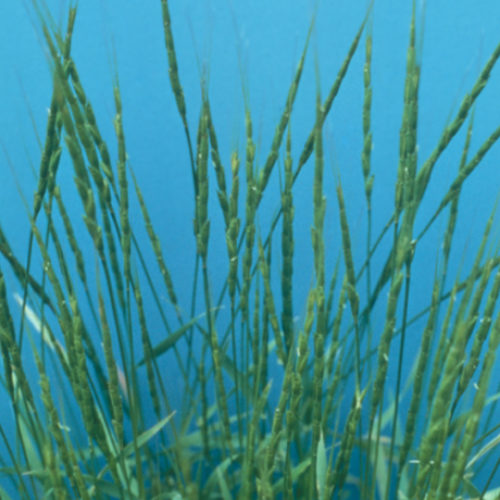Jointed Goatgrass
Aegilops cylindrica

Family: Poaceae
Other Common Names: jointgrass
Weed class: C
Year Listed: 1988
Native to: Europe and Asia
Is this Weed Toxic?:
not known to be
Why Is It a Noxious Weed?
Jointed goatgrass is a troublesome winter annual in winter wheat-fallow production areas. It can hybridize with winter wheat and reduce wheat crop yields.
How would I identify it?
General Description
Jointed goatgrass is a winter annual grass vegetatively similar to wheat in the seedling stage. Plants have upright stems that branch at the base, growing to around 2.5 feet tall.
Flower Description
It has a narrow, non-spreading spike of flowers with the appearance of a series of joints being stacked upon top of each other. Each joint has 2 to 6 small flowers.
Leaf description
Leaves are alternately arranged with long hairs on margins and sheaths. Leaf blades are flat and 1/8 to 1/4 inch wide.
Stem description
Hollow stems grow to around 2.5 feet tall and are tipped with slender, cylindrical seed heads.
Fruit Seed Description
Seed heads (spikes) are cylindric and narrow that break apart to spread seed during the summer months.
Where does it grow?
Jointed goatgrass is found mostly in wheat fields, but it survives along roadsides, waste areas, alfalfa fields, and pastures. It is found in most of the wheat producing areas of the Pacific Northwest and occurs in every Eastern Washington county. Please click here to see a county level distribution map of jointed goatgrass in Washington.
How Does it Reproduce?
Jointed goatgrass reproduces by seed that is generally viable for 3 to 5 years. Hybridization may occur between it and wheat. The hybrid then consists of spikelets of both wheat and jointed goatgrass. The seeds of hybrids are usually sterile.
How Do I Control It?
General Control Strategy
Preventing the invasion of jointed goatgrass into wheat fields and other areas should be a top priority. Focus should then be put on controlling small populations, crop rotation and the prevention of jointed goatgrass seed production.
Mechanical Control
Cultural Control
1) Make sure harvesting equipment is free of weed seed before moving it into fields.
2) Destroy small infestations of jointed goatgrass in winter wheat fields.
3) Change the crop, for at least two years, to a late spring crop such as millet or sorghum. To prevent goatgrass seed production, the infested area must not be planted to fall-sown grains. Jointed goatgrass seed may remain viable in the soil for several years; therefore, to prevent re-infestation, the crop must be changed for at least three years. It will help to rotate with such crops as sorghum, corn, other row crops, or a crop, such as millet, which is planted late in spring.
4) Use a winter wheat-fallow cropping sequence.
5) Do not let jointed goatgrass produce seed.
6) Prevent seed production of jointed goatgrass in areas near the field, such as in roadsides and waste areas.
7) If rain occurs near planting time, wait a few days for the jointed goatgrass seed to germinate. The new seedling plants can then be killed with tillage before you plant the wheat.
8) Plant clean wheat seed. Plant at the latest recommended date.
Biological Control
None known.
Herbicide Control
Please refer to the PNW Weed Management Handbook, or contact your county noxious weed coordinator.
For More Information
See our Written Findings for more information about jointed goatgrass (Aegilops cylindrica).









